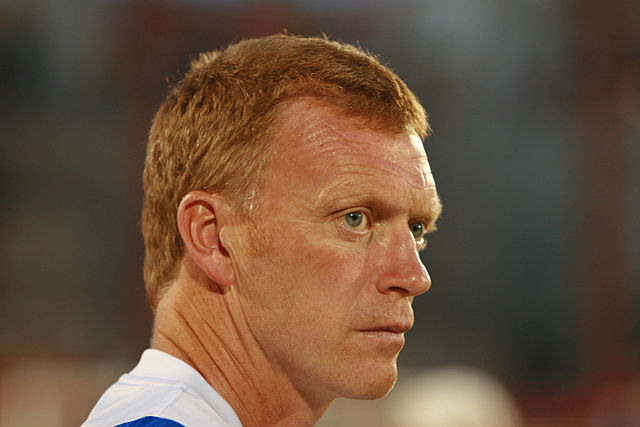Following their promotion in 2007, the Black Cats have witnessed 11 different managers during past ten years in top-tier of English football. They might have survived several relegation scares, but ‘the great escape’ did not inspire Sunderland to learn from their mistakes and influence them to establish themselves as an upright mid-table side like West Brom, Stoke City or West Ham United.
The Wearside outfit had periods of financial crisis, confusions and takeovers in past few decades. They shifted to Stadium of Light in 1997 leaving Roker Park, their home for 99 years. But that did not enlighten their fortune as they spent thrice in Championship during next ten campaigns.
A relegation from Premier League with 15 points during 2005-06 campaign resulted in a takeover by Irish Drumaville Consortium, led by former Black Cats forward Niall Quinn. Quinn took the managerial role but handed it over to legendary Manchester United and Republic of Ireland midfielder Roy Keane after one month in charge. Keane headed Sunderland back to Premier League being named the winners of Championship that earned them a direct promotion.
And the trouble begins… Keane managed to stay out of relegation scare during his first season in charge of Premier League football but resigned in the midway of next campaign after a streak of poor outcomes and an alleged fallout. Ricky Sbragia was appointed in a caretaker role and stepped down after keeping them in Premier League at the end of 2008-09.
Meanwhile, Irish-American business tycoon Ellis Short completed another takeover and appointed veteran Steve Bruce as their new manager. Bruce, too, survived only for a couple of seasons and was sacked on 30 November 2011 due to a poor run of results. Experienced Martin O’Neill was handed the responsibility and he did not disappoint. He helped Sunderland to survive another relegation threat but failed to live up to the expectations in the following campaign. He was then replaced by Italian ‘madman’ Paolo Di Canio whose appointment led to severe turbulence and chaos inside management due to his previous controversies. However, his passion and touchline antiques made him a fan favourite and became a cult hero after miraculously saving them from a much-anticipated relegation.
But he too had a poor start in the following campaign and lost his dressing room. He was sacked and replaced by Uruguayan Gus Poyet who was an admired figure during his playing days with Tottenham Hotspur and Chelsea. He brought back the much-needed stability and eventually helped them to stay in the league for another year and led them to the 2014 Football League Cup final where they suffered a 3-1 defeat to Manchester City. Poyet also failed to provide a long-term solution and sacked after managing only one win in last 12 fixtures of his Sunderland tenure. Veteran Dutchman Dick Advocaat was appointed and delivered a ‘copy-paste’ outcome after managing an emotional survival with a game in hand. Advocaat was retained for the next campaign against his wishes. However, he resigned after failing to register a single win in first 8 games of 2015-16 and was replaced by veteran Englishman Sam Allardyce that literally resulted in an ‘action replay’ of previous occasions with Sunderland surviving another relegation battle. Allardyce went on to become the new England manager following the resignation of Roy Hodgson after a miserable UEFA EURO 2016. Allardyce left the Sunderland job and was replaced by David Moyes.
Moyes, the once ‘chosen one’ of Manchester United, is currently in middle of a disastrous campaign. With his side placed rock bottom in the league table, Moyes, too, might expect another sack soon if he doesn’t upturn their fortune in upcoming weeks.
Sunderland are arguably the luckiest side in past few years when they somehow managed to stay up in an extremely competitive league. The management tried out plenty of options, but none succeeded. Are the managers completely to be blamed for? No, there are other reasons as well.
The Business they have done in past decade never been up to the standard of Premier League football. Mostly, the players they brought in are top club rejects and those who passed their prime. Also, the club have suffered unfortunate injuries and lost it’s crucial first team regulars in crunch time. But this can never be an excuse, especially, when the club has gone through the same experience again and again, yet they did not do enough in the transfer market to increase squad depth and make quality inclusions.
34-year-old Englishman Jermain Defoe has been the most influential inclusion in the last couple of years who led his side from front to ensure staying up in the league. David Moyes, the former Everton and Manchester United manager, brought in players like Adnan Januzaj, Paddy McNair, Donald Love, Steven Pienaar, Bryan Oviedo, Joleon Lescott, Darron Gibson and Victor Anichebe who once played under him and now exiled from their former employers. None of his signings have made an impact and Patrick van Aanholt, their marauding full-back, has parted ways and joined Sam Allardyce’s Crystal Palace.
Things are getting worse for Moyes and his hope of survival is fading away rapidly. Although they have drawn against mighty Spurs, the outcome might just not be good enough considering the promises shown by their relegation rivals Swansea City, Hull City, Middlesbrough and Crystal Palace. Sunderland are extremely lucky as they are still in the league; even a change in the managerial role might work out once again like it previously did, but the reality is not in favour of another ‘great escape’ and finally they seem to be running out of luck.

